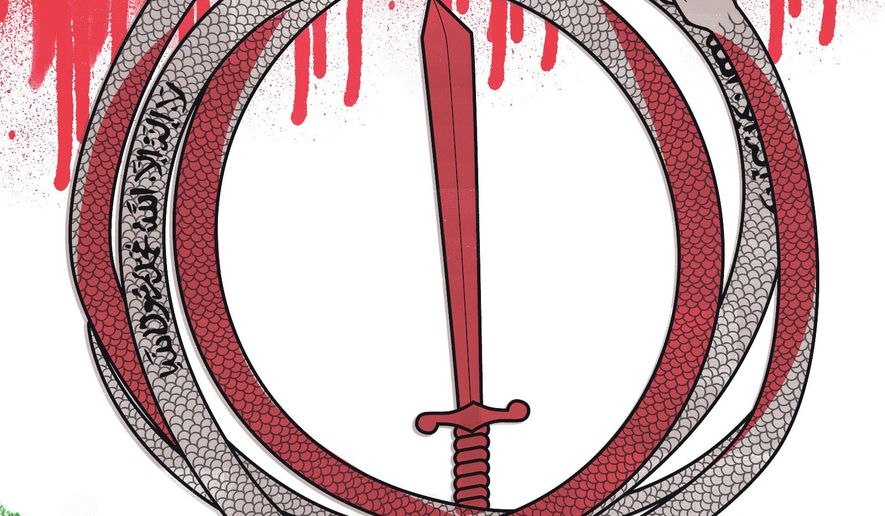OPINION:
As the 15th anniversary of the Sep. 11, 2001 al Qaeda terror attacks approaches, it’s worth remembering a country whose support of that terror group has been seldom detailed by U.S. news outlets: Iran.
On July 20, 2016, the U.S. Treasury Department announced that it had sanctioned three high-level al Qaeda operatives who are living in Iran. A departmental press release stated, “Treasury designated Faisal Jassim Mohammed al-Amri Al-Khalidi (Al-Khalidi), Yisra Muhammad Ibrahim Bayumi (Bayumi), and Abu Bakr Muhammad Ghumayn (Ghumayn) as Specially Designated Terrorists for acting for or on behalf of al Qaeda.”
Yet, many in the U.S. news media failed to report the recent Treasury designation of the al Qaeda terrorists in Iran. This is perhaps all the more remarkable as Tehran’s support of al Qaeda is not new and has been noted — if infrequently — by some press and policymakers.
Indeed, the bipartisan 9/11 commission report, which investigated the Sept. 11, 2001 al Qaeda terror attacks — the largest mass casualty terrorist attack in U.S. history — pointed out that there was “strong evidence that Iran facilitated the transit of al Qaeda members into and out of Afghanistan before 9/11, and that some of these were future 9/11 hijackers.”
In his 2006 book “The Looming Tower: Al Qaeda and the Road to 9/11,” author Lawrence Wright noted that al Qaeda and Hezbollah, the Iranian-backed Shiite terror group, trained together in the 1990s. Mr. Wright speculates that the former may have even adopted the tactic of suicide bombing from the latter.
In the years since, al Qaeda operatives have continued to receive support from Tehran. After the U.S. invasion of Afghanistan in 2001, many al Qaeda terrorists fled to neighboring Iran — where they received sanctuary under the guise of “home detention.” The Islamic Republic refused to extradite them to their home countries for prosecution.
Many of those who received refuge from the mullahs occupied the upper echelons of al Qaeda.
Sa’ad bin Laden, son of the terror group’s founder Osama bin Laden and the heir apparent before his death in a July 2009 U.S. drone strike in Pakistan, was among several top Iran-based al Qaeda officials who were sanctioned by Treasury in January 2009. Another, Mustafa Hamid, was described as al Qaeda’s “emir in Iran.” According to Treasury, during the 1990s, Hamid “passed communications between Osama bin Laden and the Government of Iran In late 2001, Hamid also negotiated on behalf of al Qaeda in an attempt to relocate al Qaeda families to Iran.”
Associated Press reporters Adam Goldman and Matt Apuzzo noted in a May 12, 2010 article that the CIA had even developed a program, code-named RIGOR, to monitor al Qaeda members in Iran. However, as terror analyst Thomas Joscelyn bemoaned in a Weekly Standard article at the time, “Al Qaeda’s network in Iran is one of the most underreported aspects of the international terror networks. Mr. Apuzzo and Mr. Goldman deserve credit for digging into a story that relatively few journalists have explored.”
More than six years later, al Qaeda’s Iran connection remains underreported — and not coincidentally, little understood. What is clear, however, is the seminal role the Islamic Republic has played in fermenting Islamist terror, of which al Qaeda is but one of several beneficiaries.
Support from Shiite Iran for non-Shiite terror groups is hardly unprecedented: Tehran has a history of strategically supporting Sunni terrorists that share the Islamic Republic’s objectives of attacking Israel (such as Hamas and Palestinian Islamic Jihad) or those who attack the “far enemy” of the United States, such as al Qaeda.
Iran also played an important role in supporting al Qaeda in Iraq, the progenitor of the Islamic State in Iraq and Syria (ISIS). As Michael Weiss and Hassan Hassan noted in their 2015 book “ISIS: Insider the Army of Terror,” AQI head Abu Musab al-Zarqawi was “based in Iran and northern Iraq” for “about a year” after fleeing Afghanistan following the arrival of U.S.-led coalition forces in Operation Enduring Freedom. After a brief arrest by Iranian authorities, he was allowed to “move freely” throughout the region to recruit for the Iraqi terrorist antecedent to what would eventually morph into the global threat that ISIS is today.
Mr. Weiss and Mr. Hassan pointed out that in May 2014, amid battles between Iranian militias and ISIS and a break between ISIS and al Qaeda, ISIS spokesman Abu Muhammad al-Adnani noted in a message to al Qaeda leader Ayman al-Zawahiri that their organization had not attacked Iran since its founding. Further, despite enduring allegations of collaboration with the Islamic Republic, the group had “refrained from targeting it” acting “upon the orders of al Qaeda to safeguard its interests and supply lines in Iran.” The Islamic State spokesman proclaimed, “Let history record that Iran owes al Qaeda invaluably.”
It may also be said that al Qaeda owes Iran “invaluably.” Journalists would do well to report the relationship between the Islamic Republic and the terrorist groups it has supported — including the one responsible for the horrors perpetrated 15 years ago.
• Sean Durns is a research analyst for CAMERA, the Boston-based, 65,000-member Committee for Accuracy in Middle East Reporting in America.




Please read our comment policy before commenting.